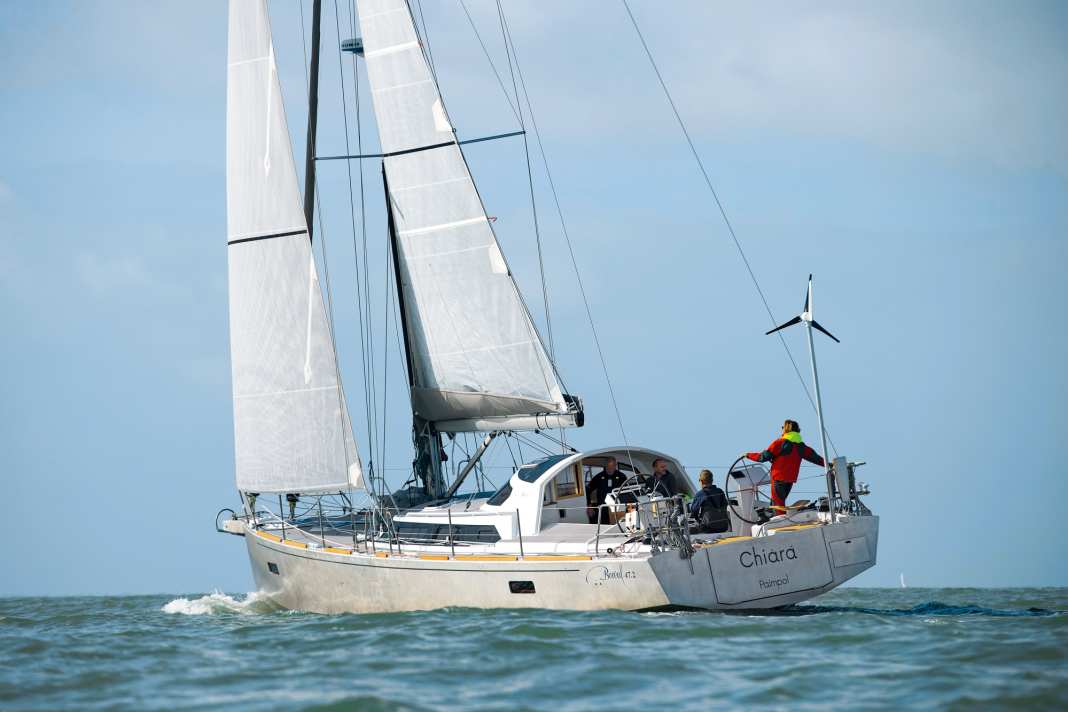





It is not a sign of ignorance if you don't know the brand with the calligraphically curved lettering. It has only been around for sixteen years; the actual shipyard was only established eleven years ago. And to this day, the two bosses - Jean-François Delvoye, the architect and inventor, and Jean-François Eeman, the manager and marketer - know each of the owners personally - however small the company, however small the quantities, however close the contact.
Compared to the big names in water sports, Boréal is an absolute exotic. Even the smallest Beneteau dealer sells more boats per year than the Bretons can build. Even in the long-distance yacht segment, they are considered specialists. However, they have made a name for themselves among connoisseurs. They have already won the title of European Yacht of the Year twice with their aluminium constructions, most recently in January with the new 47.2 against tough competition.
But the model is definitely a risk. With it, Boréal is leaving the narrow niche of expedition yachts developed specifically for high latitudes. The boat should be just as suitable for long cruises on the Baltic Sea as for a trip to South Georgia, anchoring in Rodney Bay as naturally as off Puerto Williams. Caribbean or Tierra del Fuego, temperate or extreme latitudes - the 47.2 is "made for everything", assures Jean-François Eeman. That is no small product promise.
In essence, the model remains a typical Boréal: robust, powerful, unaffected. But if you detach yourself from the workboat-like crudeness of the aluminium construction and focus not so much on the colour but on the shapes, you will quickly recognise the evolution that has taken place: Both fore and aft, the stem now protrudes almost vertically out of the water; the hull is wider, higher and more than a metre longer in the waterline than that of the predecessor model developed in 2010.
As soon as the first drawings began to circulate, quite a few of the existing owners paused for a moment. "Is that still a Boréal?" asked the fan community. To say it up front: yes, it is! There is no need to fear a risk of dilution or even lifestyleisation. The founding history of the brand and the unquenchable passion of its shareholders speak against this.
Living passion
Before Jean-François Delvoye drew, welded and carpentered the first customer boat in 2005, he had been sailing for six years with his wife and four children in a 15-metre aluminium self-built boat. His practical experience and that of other sailors still characterises the shipyard's designs today. The 47.2 also bears his recognisable signature.
He met Jean-François Eeman, his partner, at a jetty in Ushuaia. The two share the same passion, the same convictions. And even now, after the business has been established and the model range has grown, they still take it in turns to leave the daily routine for weeks or months at irregular intervals - a kind of living market research.
These days, the Managing Director is once again far away. We reach him in the Azores and only via the diversions of his private e-mail account. Eeman, who prefers to be barefoot on deck even in the northern European autumn, is taking the last chance for a longer break under sail before his son has to concentrate on his A-levels. In terms of nautical miles, probably no other shipyard boss can even remotely compete with the Boréal buddies. The two are unquestionably their own toughest product testers.
Proven solutions
It is therefore not surprising that, despite all the zeal for further development, a number of the brand's unique and special features were deliberately left out of the modernisation. The most visible proof of this is the short, compact deckhouse, which spans the companionway and, with its extended roof, also the front part of the cockpit. The Anglo-Saxons call it the "doghouse" because the space is limited and only enough for one or two crew members.
The semi-circular pulpit is a multifunctional marvel, as is the entire ship. It keeps water out of the saloon, even when it rains heavily or spray flies from the front. If necessary, it can be hermetically sealed with a heavy aluminium door, making the cabin an oasis of calm in stormy weather and a floating safe in high-crime areas, or at least a shelter that is difficult to take.
A wide table inside is used for navigation with classic paper charts. Daughter displays for the on-board electronics, plotter and radio are perfectly positioned here in the transition between the cockpit and saloon. If desired, the high seat with all-round view can also be used as an on-board office, as a laptop and second screen can be connected. The softly curved seat offers a variety of positions: upright in the direction of travel and semi-recumbent at an angle, the shape ensures a secure hold. It's a place to take the edge off any dog watch, because the 47.2 is guaranteed to be neither clammy, cold nor uncomfortable. There is currently no better arrangement on the entire yacht market.
And the deckhouse can do even more. Its entire aft edge is double-walled and forms a 20-millimetre-high corrugation that is open at the front. This acts like a giant Dorade fan: the airstream is channelled and deflected downwards into the cabin, with water flowing outwards by gravity. An ingenious, highly efficient forced ventilation system that is indestructible and works even when the hatches are blocked in tropical or polar storms.
The concave roof surface of the superstructure can be fitted with customised solar panels from Solbian on request, which generate up to 560 watts of charging power at peak times. Together with a wind generator, which is also available at extra cost, the boat can be powered almost entirely by renewable energy. However, there is also an optional diesel generator which, in conjunction with a water maker, enables months of autonomy.
Seaworthy expansion
Now that we're in the companionway, let's move on to the interior and below deck. It is light and friendly here, thanks to the many windows, hatches and light-coloured wood. The shipyard offers ash as standard and light-coloured oak on request. Whereas earlier Boréals were rather squat, almost cramped, the 47.2 makes a more open, spacious impression.
Nevertheless, it should not be compared with mass-produced boats with a hull length of around 15 metres, which look like dance halls in comparison. The raised saloon seating area and the slightly protruding bulkhead to the deckhouse reduce the impression of space. And it's not just a feeling: if you want to get to the aft cabin on the port side, you have to wriggle past a passageway that is only 41 centimetres wide. The headroom in some compartments is also tight for a boat of this size. The starboard head compartment, for example, does not even have a headroom of 1.80 metres.
The shipyard did not accept this by mistake, it was a conscious decision: "We didn't want to provide an unnecessarily high freeboard just to create more space in a few places," explains Jean-François Eeman. "A higher hull would mean more windage at the anchorage," he points out.
Wider gangways were also not a primary development goal because they make it more difficult than easier to support and hold on at sea. In this respect, the Boréal is a model. Wherever you intuitively reach, there are handles or bars, often even both, or at least solid mouldings, which are becoming increasingly rare today. All important functional areas are also located in the centre of the yacht's pivot point.
The centreboard box is concealed by the central platform of the saloon sofa; the fact that a solid aluminium sheet with a Naca profile disappears into it and into the bulkhead to the owner's bathroom when anchoring or even "beaching" on shallow stretches of coast is not at all noticeable. At best, the crew will appreciate being able to lean their backs against it when working in the galley.
The cooking area itself is much more than that. It offers plenty of space, relatively high headroom, a view to the outside and two large refrigerator drawers, one of which can be used as a freezer. There is plenty of storage space throughout the boat. There are also several easily accessible compartments under the floor, all neatly lined.
More provisions could be stored in the passageway to the forecastle. However, the Refleks stove is enthroned here on construction number 1, an optional extra, but one that can be found on almost all Boréals. It not only supplies the saloon with cosy warmth without unpleasant draughts, but also the other compartments, which are fitted with panel radiators.
Even though there was no frost at night during the test in October, it still cooled down noticeably to 8 to 10 degrees. And although the stove remained off, the only place where moisture or condensation could be found in the morning was on the frames of the Goiot hatches - nowhere else. This is due to the careful insulation of the hull and deck: Boréal inserts 80 millimetres of PU foam into the hollow spaces; hard-to-reach areas in the structure are coated with a cork/colour mixture.
Strong structure
There is no need to worry about the integrity of the aluminium construction. The strength of the outer skin as well as the spacing and dimensions of the frames and stringers meet the highest standards. Many owners choose a Boréal for this reason and have already been in the ice with their ships, as have the shipyard managers. This is why, unlike other shipyards, they stick to the concept of the centre rudder protected by the keel. And not only weld a watertight collision bulkhead in the bow, but also aft in front of the rudder bearing. "Better safe than sorry," says Jean-François Eeman.
It was almost a shame that the test took place in mostly moderate conditions. It was only possible to guess at the strength of the convoys - for example in the wave of a passing freighter or at a good 20 knots in the swell of the Bay of Biscay. The 47.2 parried both without a hitch: no pumping in the rig, no twisting in the hull or deck. Anything else would have been a surprise, however, as the shipyard bosses are absolutely uncompromising when it comes to substance.
What is rather astonishing about a yacht of this calibre are its sailing characteristics. To describe the Boréal as a "dancer", as a well-known German extreme sailor once said of his boat, would be going a little too far. However, she is much more responsive at the helm and rewards trimming efforts more immediately than most of her competitors.
Amazing temperament under sail
Even the clean water break at the stern is the first indication that the 47.2 has efficient lines and a balanced lift distribution. The same applies to the measured values, not least in light and medium winds.
After tacking and gybing, it always takes a while to get up to speed again. But then she marches ahead at a respectable speed for her sail carrying capacity. Only under genoa 3 and main does she turn 6 to 7 knots of wind into 4 to 5 knots of speed when the sheets are shrouded - fast enough not to think about starting the diesel. With a larger headsail or code zero, there would undoubtedly be more to be gained.
With 10 to 12 knots of true wind, the Boréal really comes alive. Then the sails of the test boat are sufficient for a good 7 knots at the cross and 8.5 knots under gennaker - close to the hull speed.
Measured values of the Boréal 47.2
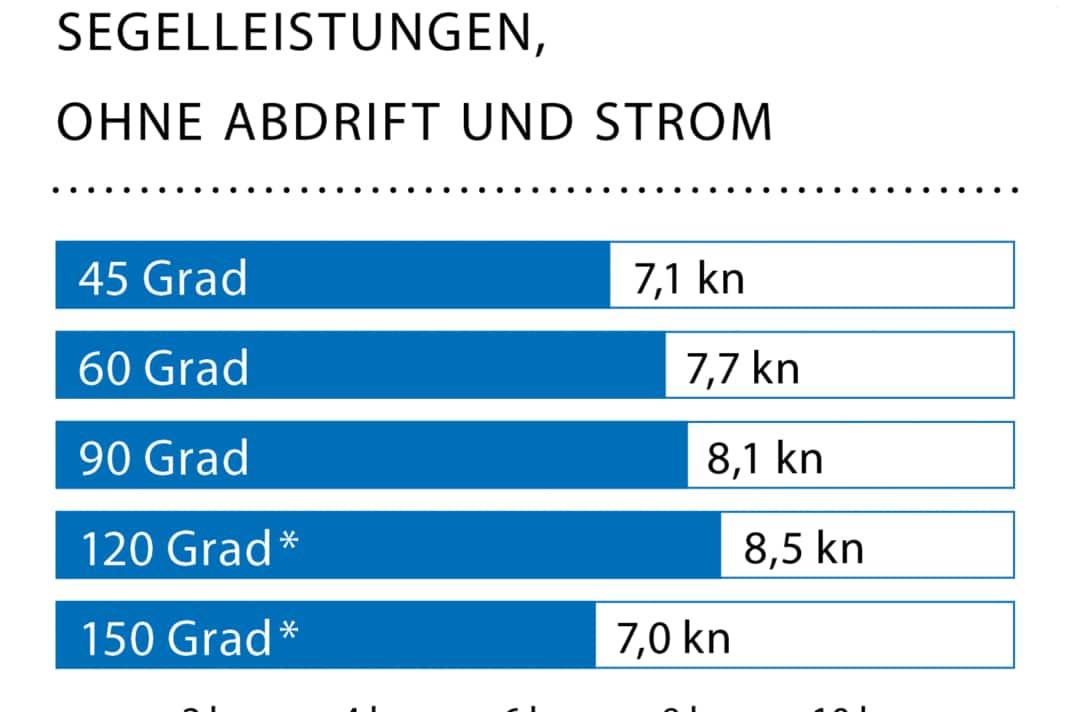





The sluggishness, even doughiness, noticeable on some expedition yachts is completely absent. She can be steered precisely on the windward edge without appearing nervous, and she hardly requires any familiarisation time from the helmsman. She also sails pleasantly stiff, which is by no means a matter of course for yachts with a centreboard and internal ballast - undoubtedly an effect of many individual measures that work together positively here.
The wide aft-facing hull and the 200-kilogram increase in keel weight compared to the previous model noticeably increase stability. In addition, the masses of the 47.2 are well centred, as is usual for the brand. The anchor chain guide runs from the bow aft to in front of the mast and from there downwards into a box in the bilge.
There are even more factors at play. These include the modified rig and sail plan. On the Boréal 47.2, even the staysail, which is usually designed as a self-tacking jib, has a slightly overlapping sheet, which not only provides more surface area on the wind, but also more efficiency. In addition, it does not twist up so early on deeper courses and can be trimmed better using the pleasingly long sheet tracks.
This allowed Jean-François Delvoye to get more power out of the boat without having to rig a higher mast, which in turn would have cost stability. He consciously accepted the slightly greater operating effort when cruising compared to a self-tacking jib. Especially as this hardly matters because the boat has an extremely successful cockpit layout.
In the aft area, where trimming takes place, there is a powerful 65 mm Lewmar centre winch for halyards and outhauls as well as four further winches for main and genoa or gennaker sheets - all positioned at an ergonomic height and within easy reach of the helmsman. It is an adaptation of the cockpit that has proven itself on the previous top model, the Boréal 55 OC, which also has two helm stations.
The complexity of the shipyard's work can be seen in the line routing. Each end deflected aft from the mast runs in its own channel. If a line breaks, a replacement can be pulled in quickly without having to remove covers or fiddle with long threading aids on deck. Just one of those Boréal special features of which there are so many - and whose practical benefits are not always immediately obvious.
Conclusion
Pasi Nuutinen, member of the jury for Europe's Yacht of the Year and chief tester of the Finnish sailing magazine "Vene", said after his trial run on the 47.2: "It's like peeling an onion or opening a matryoshka: each time new layers are revealed, each one a little surprise in itself."
That characterises this boat perfectly: It surprises again and again. Sails more lively than the rough hull would suggest, but also offers more comfort than you would expect. It retains its original purpose of easily parrying even heavy weather, but at the same time shines with an almost Mediterranean-sized guest cockpit and a bathing platform. Combines traditional features such as a diesel stove with unique details such as the lowerable centreboards at the stern.
Is it the shipyard bosses' penchant for adventure that makes them take such a lonely course? Or is it their inexhaustible wealth of experience that encourages them to do so? It doesn't really matter. Let's just say: it's good that there is something as unique as the Boréal 47.2 in a sea of similar boats!
YACHT review of the Boréal 47.2
With a wide stern and double helm position, the Frenchwoman adopts elements of modern boat building in a genre that is otherwise more about getting there. This promotes rigidity as well as sailing fun and makes the Boréal 47.2 a true universalist.
Design and concept
Proven, extremely robust design
Centreboard, can fall dry
Deckhouse with panoramic view
Sailing performance and trim
High base speed
High directional stability, good rudder feel
Ergonomic work cockpit
Living and finishing quality
Seaworthy cabin layout
Light, yet durable finish
Double berth port aft narrow
Equipment and technology
Careful insulation
Top workmanship and components
Forced ventilation via deckhouse
The Boréal 47.2 in detail
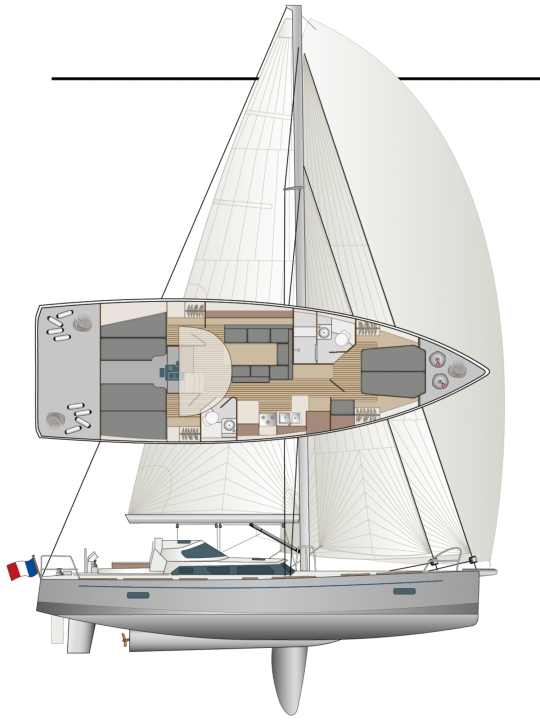
Technical data of the Boréal 47.2
- Design engineer: Jean-F. Delvoye
- CE design category: A
- Torso length: 14,36 m
- Waterline length: 12,73 m
- Width: 4,39 m
- Draft (centreboard o./u.): 1,02/2,48 m
- Theoretical torso speed: 8.7 kn
- Weight: 13,7 t
- Ballast/proportion: 3,8 t/28 %
- Mast length: 17,50 m
- Mainsail: 45,0 m²
- Furling genoa (125 %): 55,0 m²
- Stag jib (opt.): 26,0 m²
- machine (Volvo Penta): 38 kW/51 hp
- Fuel tank: 635 l
- Fresh water tanks (2): 635 l
- Holding tanks (2): 80 l
Hull and deck construction
Welded all-aluminium construction with frame frames and stringers. Keel sole 10, hull 8, deck 4 to 5 mm. Watertight collision bulkheads fore and aft, long keel with fully retractable, profiled aluminium centreboard. Lowerable centreboards.
Shipyard
Boréal Sarl, ZA Convenant Vraz, F-22220 Minihy Tréguier, Tel. 0033/296 92 44 37, boreal-yachts.com
Price of the Boréal 47.2
- Base price ex shipyard: 987,280 euros gross incl. 19% VAT.
- Warranty/against corrosion: 2/5 year
As of 04/2025, how the prices shown are defined, read here!
The competition for the Boréal 47.2 at its market launch in 2021
Boréal is not alone on the market, but has many unique selling points.
Allures 45.9
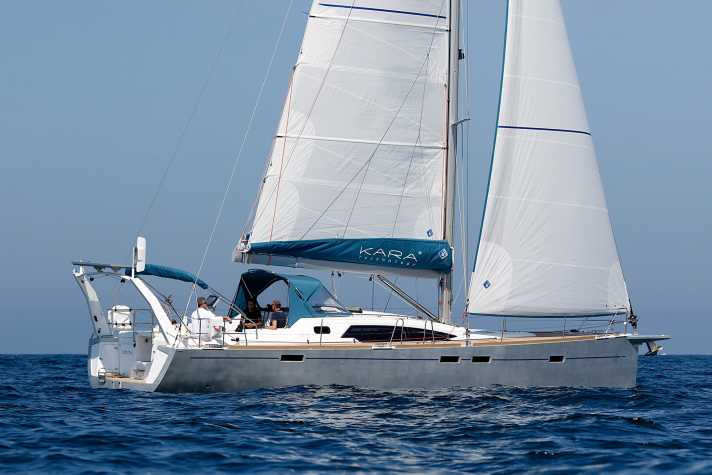
The boat from Normandy is the bestseller in the Allures programme - and the most polished yacht in this segment. It is available with either an integral centreboard or a canting keel. The interior looks appealing, the overall package is convincing and the price is favourable. However, the Boréal is more fully equipped for extreme sailing. Read the Test of the Allures 45.9.
Bestevaer 45 ST Pure
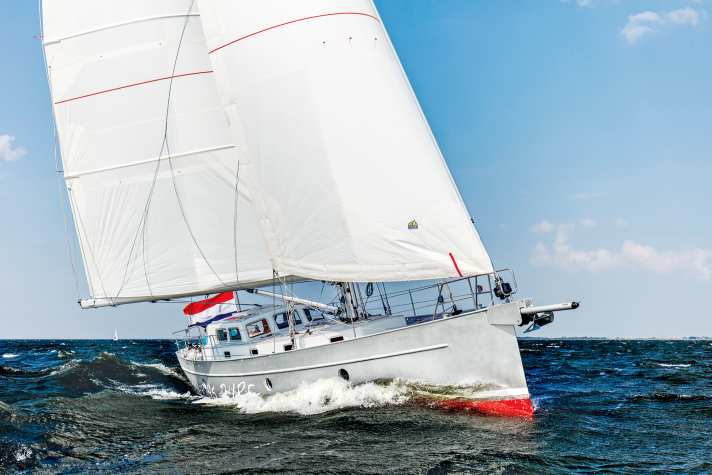
Retro design from Holland that stands out for its lines alone. The deckhouse offers the crew protection and visibility on all sides. The cockpit (with tiller!) is deep, the coamings are high, which also provides a lot of passive safety. Choice of two or three cabins. Great - and expensive, but fully equipped. Read the Test of the Bestevaer 45 ST Pure.
Garcia Exploration 45
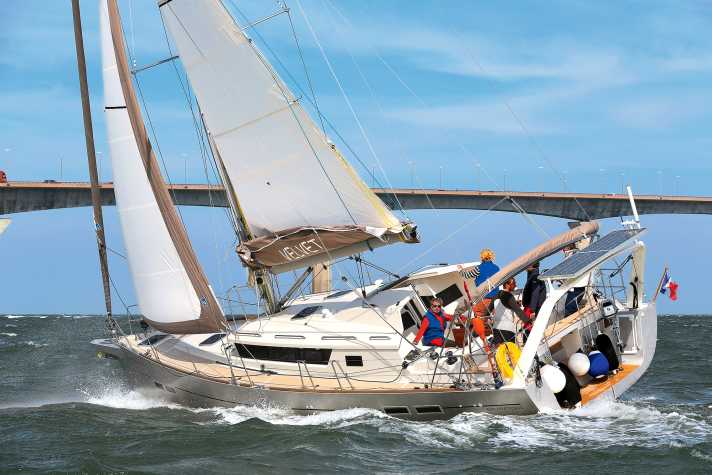
The yacht, co-developed by blue-water authority Jimmy Cornell, shares the same hull as the Allures, but is even more geared towards long-distance cruising. Thanks to the navigation system positioned in front of the saloon with a raised seating position, she allows you to keep watch from below deck. Also made for wintering in ice.
Ovni 450
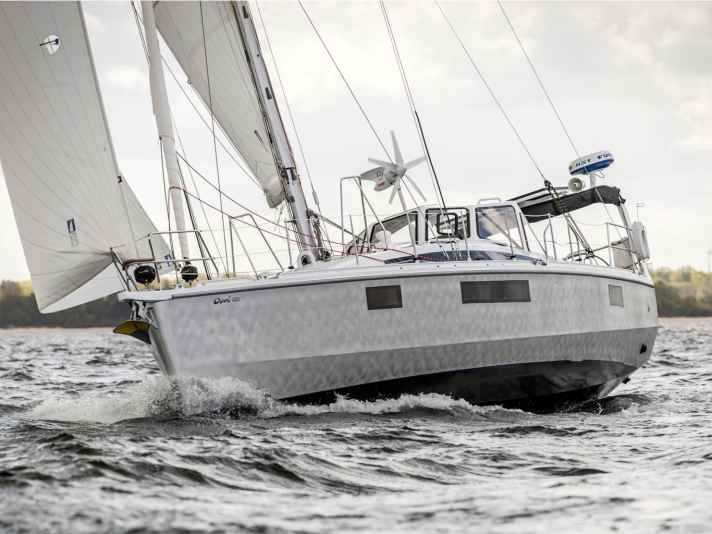
Further development of the successful Ovni 445, which lies between Allures and Boréal in terms of length, price and orientation. Enlarged window areas ensure a bright ambience below deck, while two helm stations provide a good overview. For an extra charge, a permanently welded aluminium dodger is available instead of the textile sprayhood. Read the Test of the Ovni 450.
The test was first published in 2021 and has been revised for this online version.

